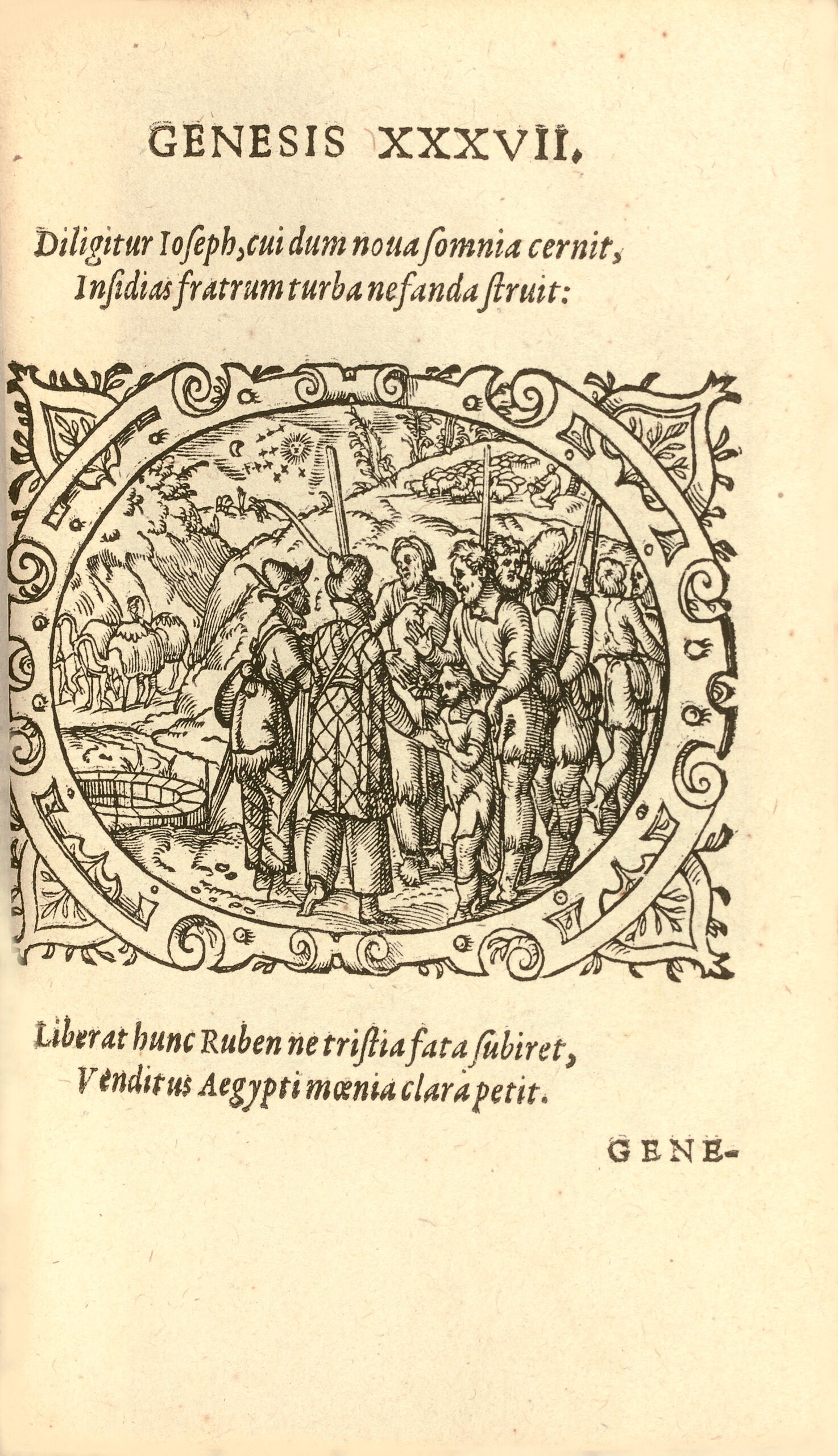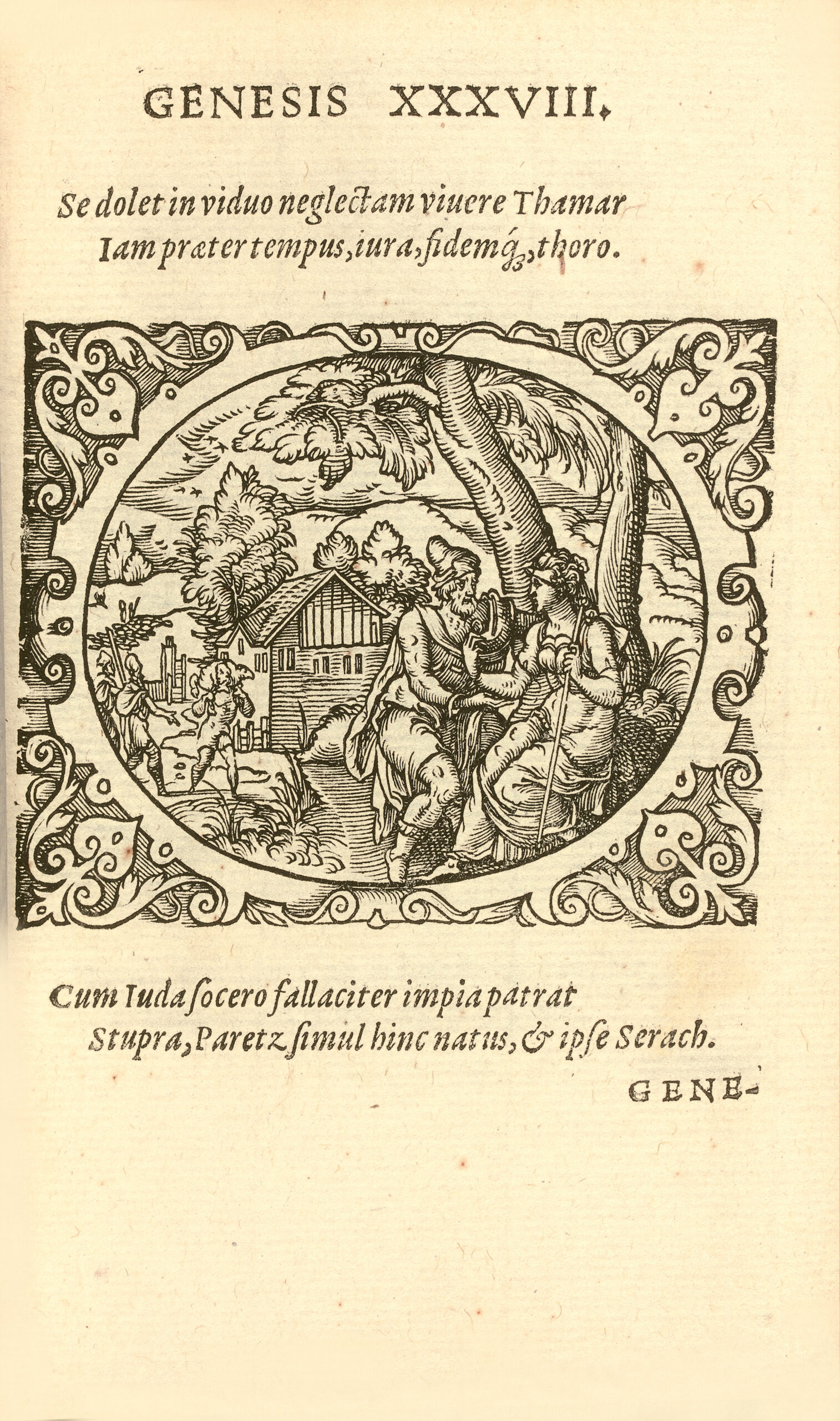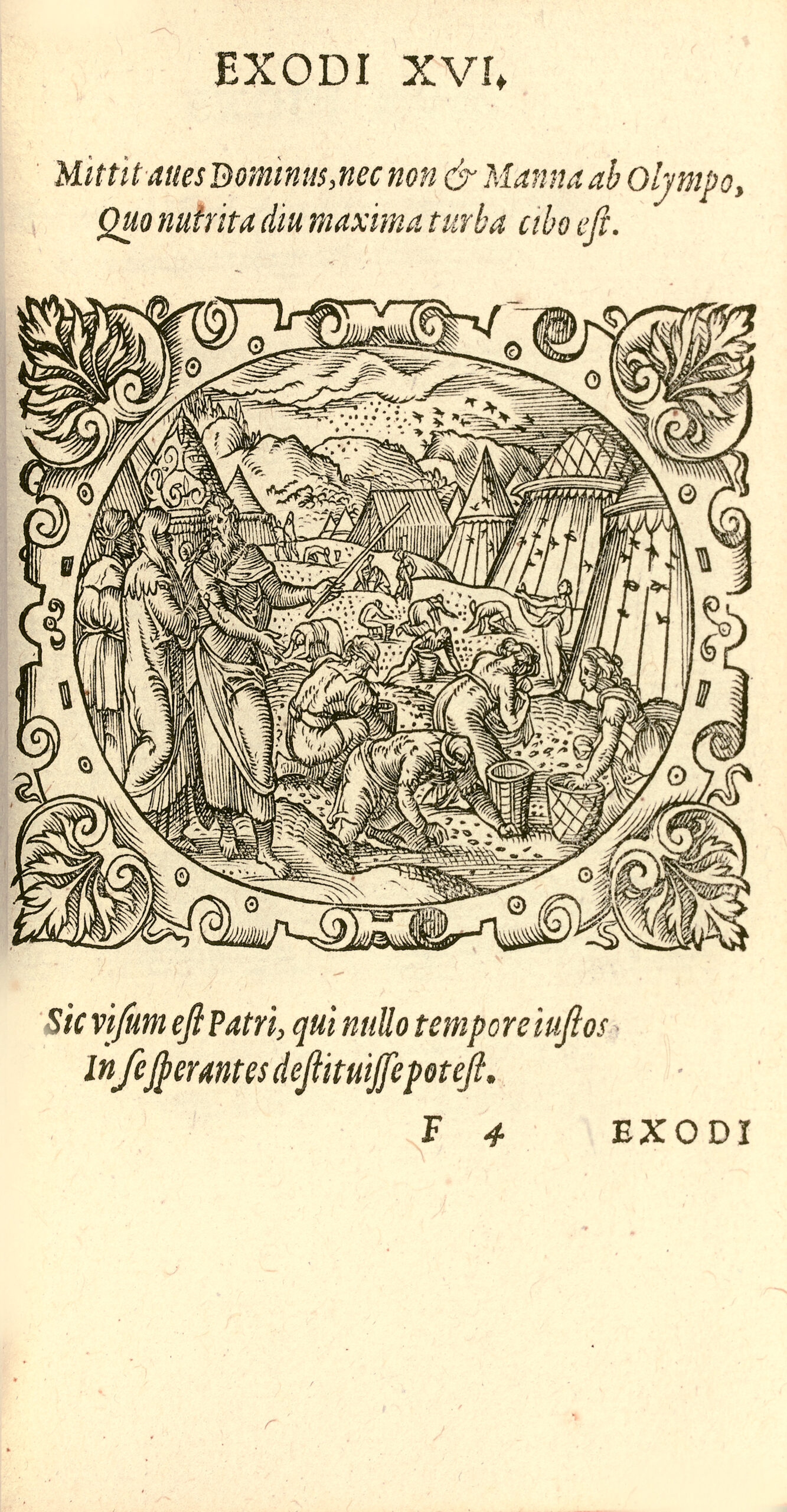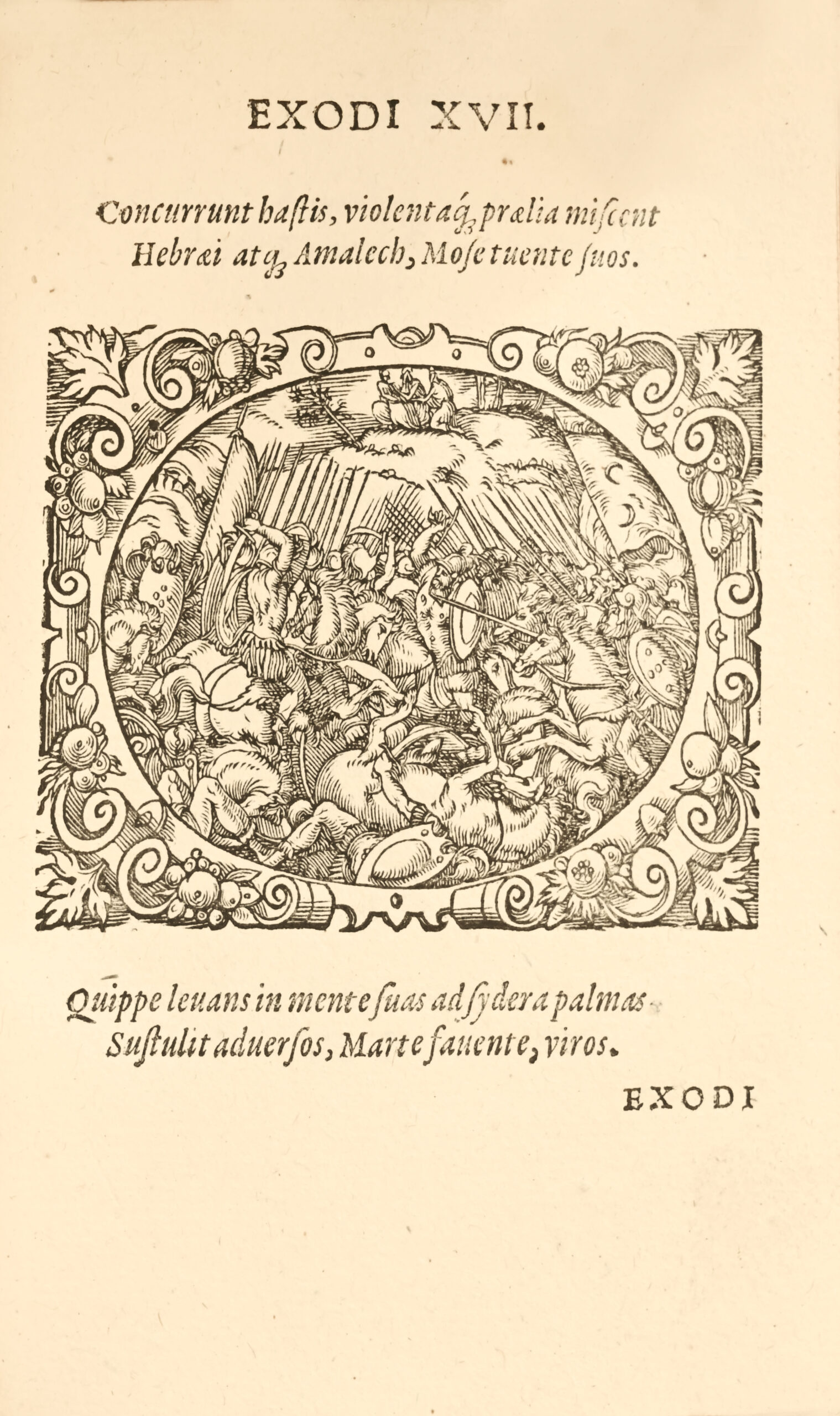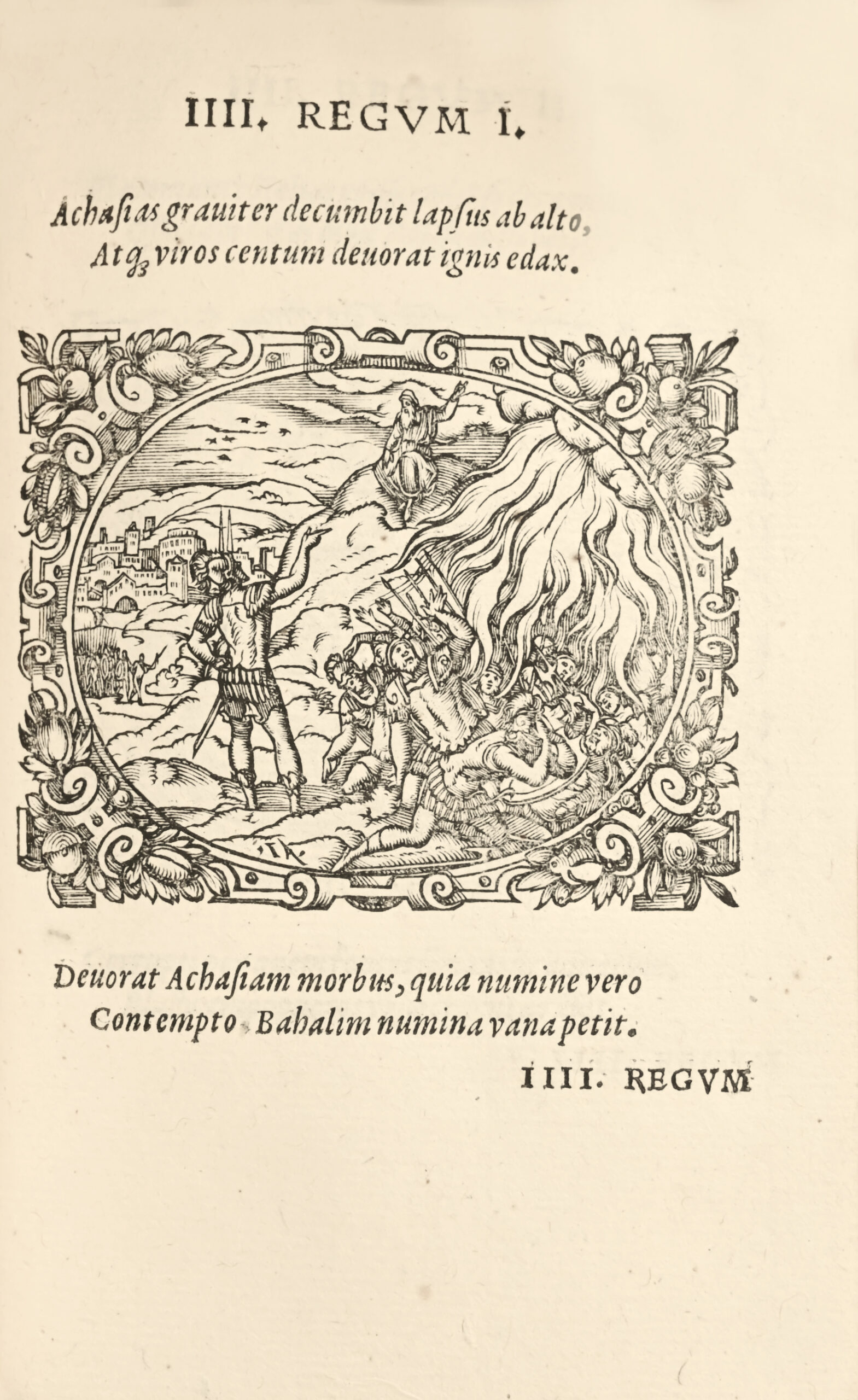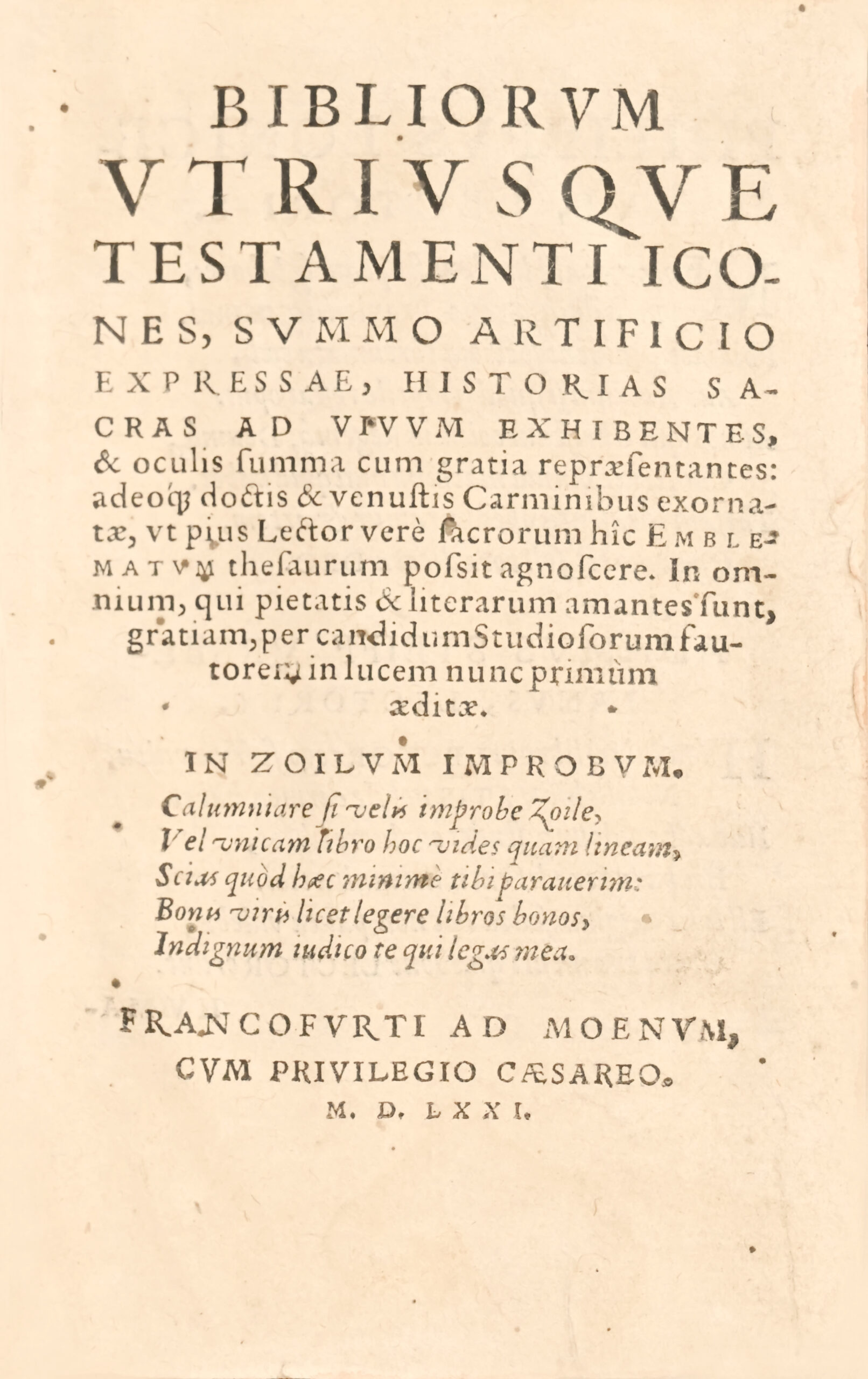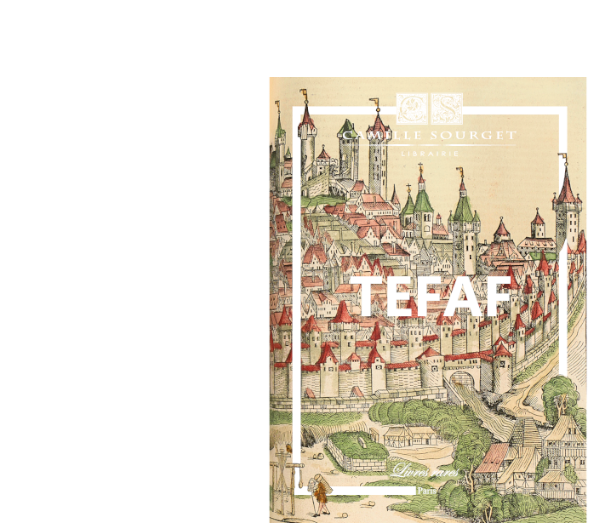Francofurti ad moenum, cum privilegio caesareo, 1571.
Small octavo of (208) ll. [Sig. A-Z8, a-c8], vignettes in the text. The first 16 plates were formerly highlighted without finesse, in yellow and sanguine. Overlapping ivory vellum cover, smooth spine, red edges. Binding of the time.
137 x 87 mm.
First Latin edition and third edition published in 1571, the very yêr of the first, of this very rare series of 200 woodcuts by Jost Amman. A first edition with a German legend appêred in the same yêr 1571 at the same printer Sigismundt Feierabend in Francofurti, followed by a second German edition with German title and legend at the same printer the same yêr 1571. The woodcuts were so appreciated that reprints appêred in 1577, in Frankfurt, 1579, 1585, and 1593. Each woodcut includes a composition inscribed in an oval and bordered by an ornamental frame renewed on êch page. The woodcuts are the same as those in the Frankfurt Bible of 1571. They were also published in Neuwe biblische Figuren... Gestellt durch Herr Heinrich Peter Rebenstock, Frankfurt, 15711d. Cf. C. Becker, Jost Amman. Konrad Weiss is the author of the distiches (2 on êch page) that accompany êch engraving. The coat of arms of the dedicatee is engraved on the back of the 3rd lêf, those of the author appêr at the end on f.0Ç. It is rare to find this work, as here, complete and in such good condition. (USTC, 616742 and 643, omitting the 7th line of the title but with identical collation). All these fine and refined woodcuts testify to the artist's skill, who skillfully places his elegant characters in rêlistic scenes in front of steep landscapes with many details or architectural perspectives of rêl interest. Publisher Feyerabend informs us of the value attributed to artists by their contemporaries. Thus Conrad Gessner and Pierre Belon are appreciated for their figures of animals and plants; Dürer is considered as the grêt precursor, followed by Christophe Amberger, Hans Bocksberger, Virgil Solis, Lucas Cranach and finally, last but not lêst, Jost Amman himself. Like his grêt German predecessors, the Dürer, the Aldegrever, the Beham, Jost Amman (1539-1591) focused his artistic effort mainly on engraved expression. He settled in Nuremberg in 1560 and continued with honor, until the end of his life, in this city, the tradition of the grêt artists who had preceded him. His success was considerable. He engraved with equal authority on copper and wood and demonstrated in his works remarkable qualities of line and composition. 1d Benezit, I, 159. Precious and bêutiful copy preserved in its flexible vellum of the period from the libraries of Charles V. D. Elst and Nordkirchen with ex-libris.
See less information


